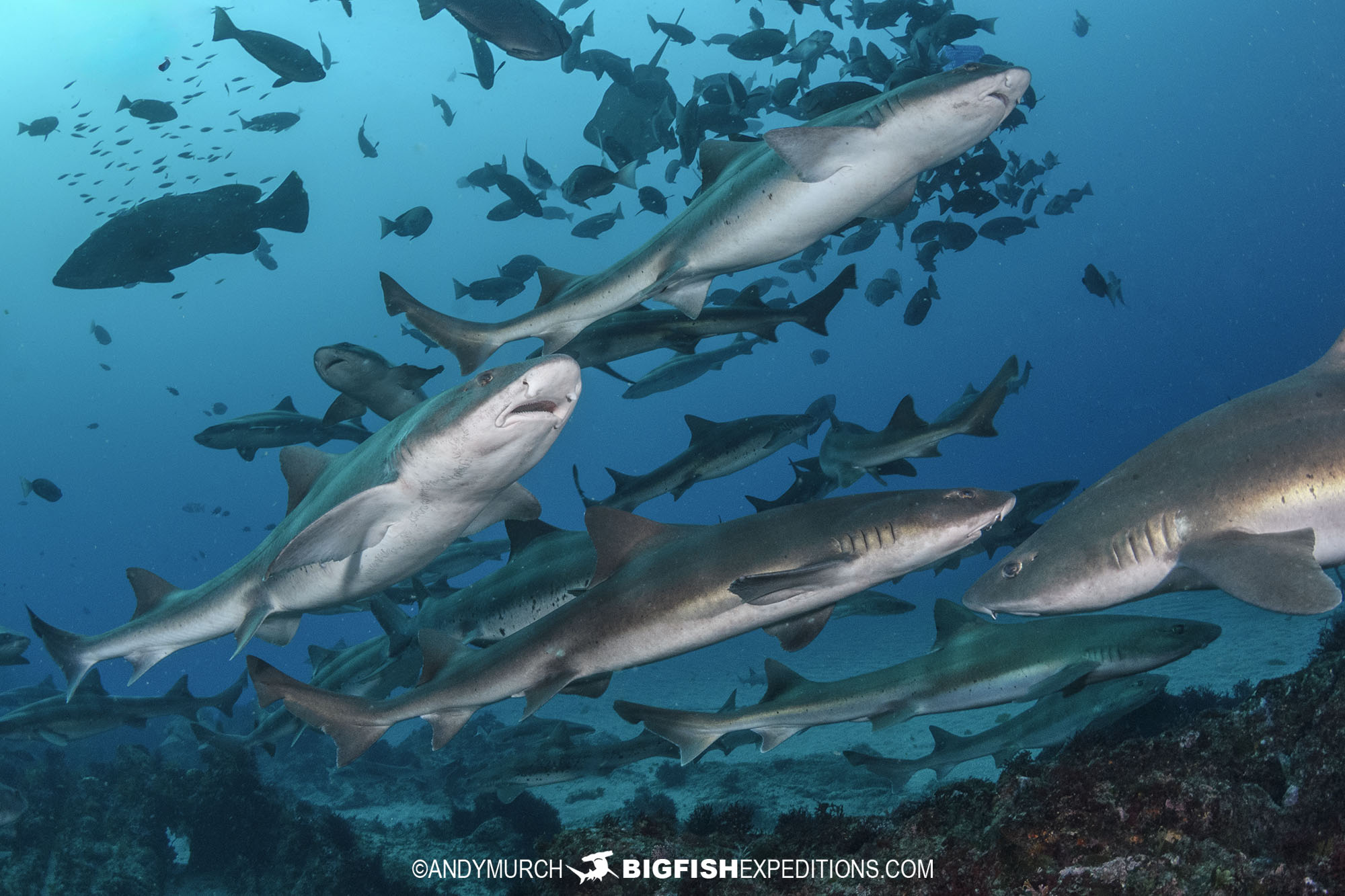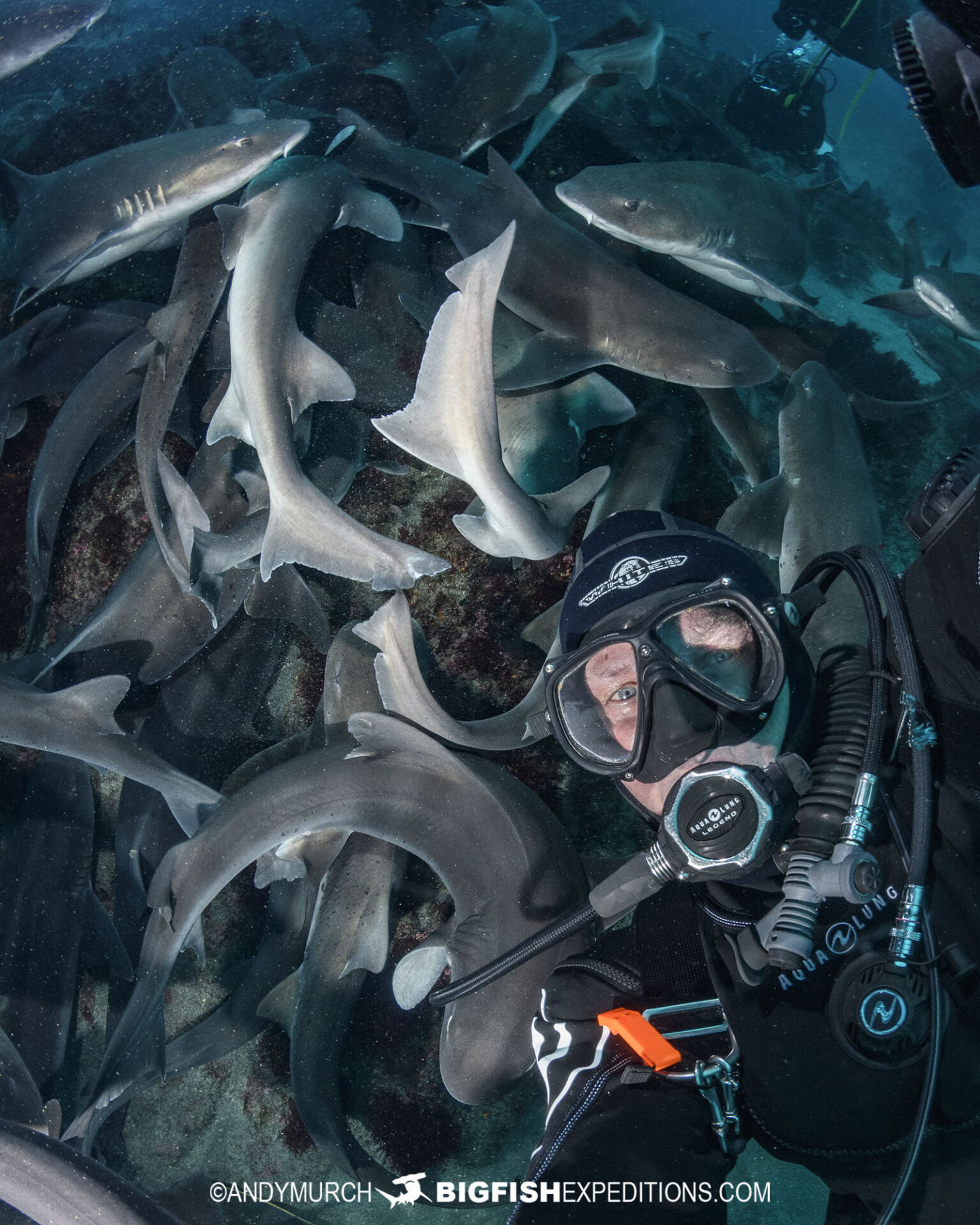
The Best Shark Diving in Honshu
The Japanese Archipelago is vast. Over the past two decades, I have explored all the major islands and narrowed down the regions with the best endemic shark and ray diversity. Fortunately, the best shark diving spots are not that far from Tokyo, namely the Boso and Izu Peninsulas.
We had great encounters on this year’s Japanese Shark Diving Safari with all the iconic endemic shark and ray species we were hoping for, but that’s nothing new for this consistently good shark diving trip that delivers every year!
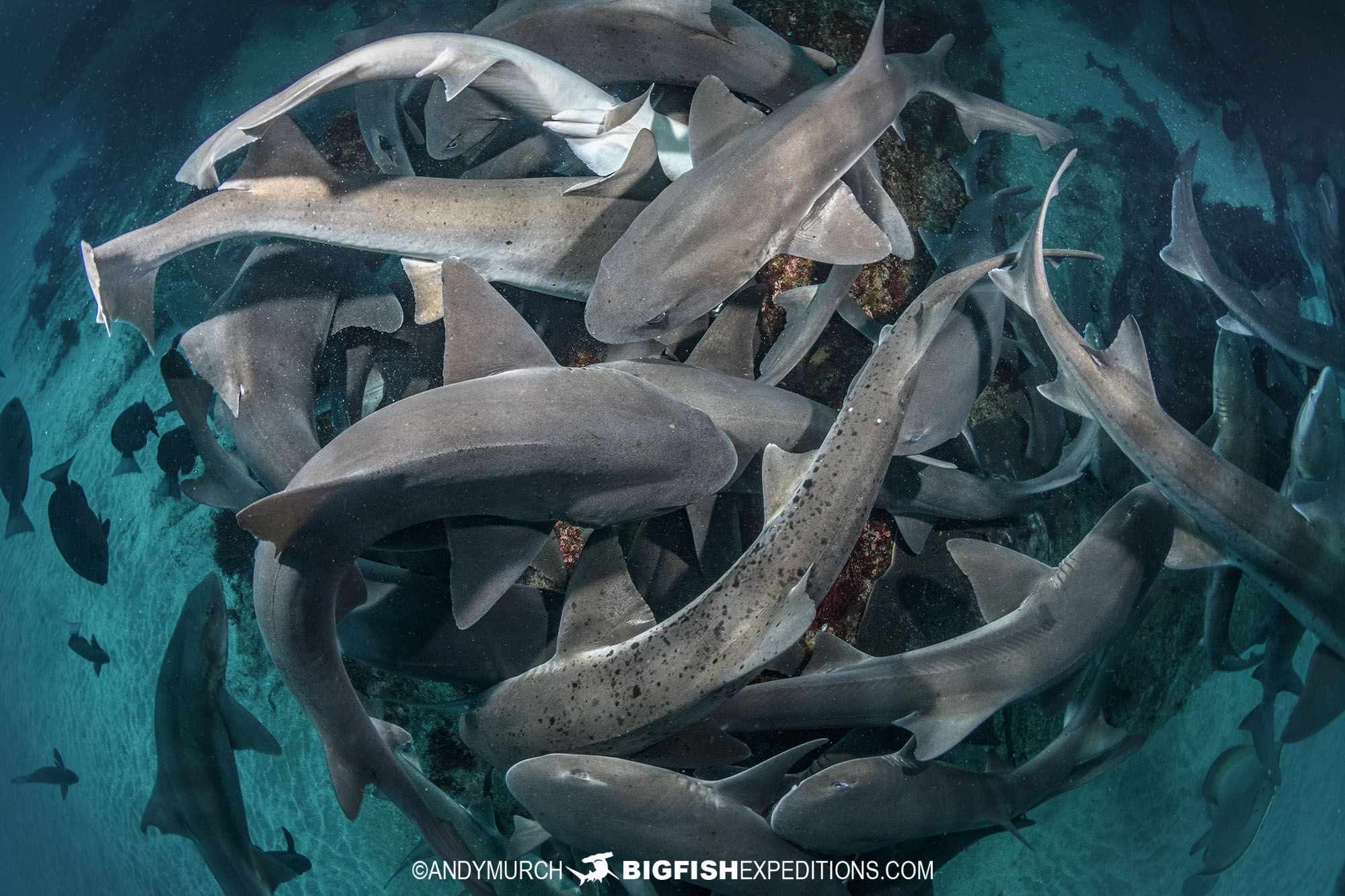
Banded Houndsharks
After picking up this year’s guests in Tokyo, we traveled to the Boso Peninsula to dive with Banded Houndsharks and many other unique species.
In all my years of diving in Japan, outside of the Boso Peninsula, I have only seen one Banded Houndshark and it wouldn’t let me get anywhere near it. But at our special spot, hundreds of banded houndsharks have become habituated to divers, so it is easy to get close up portraits of them swimming over the reef, and shots that show swirling masses of them tumbling over each other to reach the bait.
Incidentally, this is the only shark feed on the trip, and if you’re not a fan of shark feeds, this one has a BIG upside. Banded houndsharks have a habit of interfering with commercial fishing and destroying nets, leading to many sharks being killed by irate fishermen. The shark feed was actually suggested by the fishermen to distract the sharks and keep them safe.
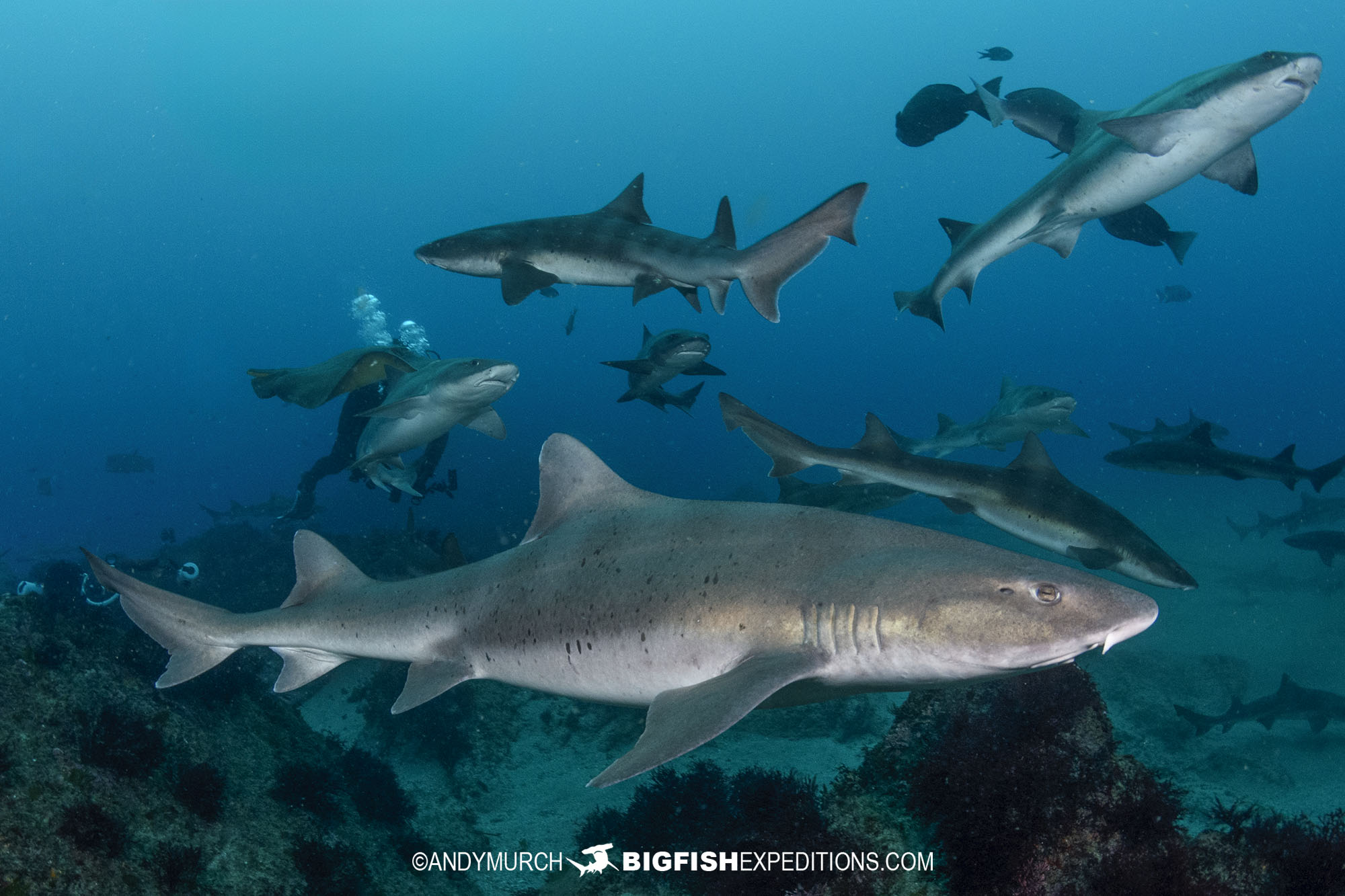
Red Stingrays and Japanese Cormorants
There are always a handful of Red Stingrays at the same spot where we dive wth the houndsharks. Its especially fun when they follow the divers up the anchor line at the end of the dive because it gives photographers a chance to swim underneath them to photograph their bright yellow edged dorsums.
This is also a great time to see Japanese cormorants diving underwater, looking for fish, and if you time it just right, you capture stingrays and cormorants in the same frame!
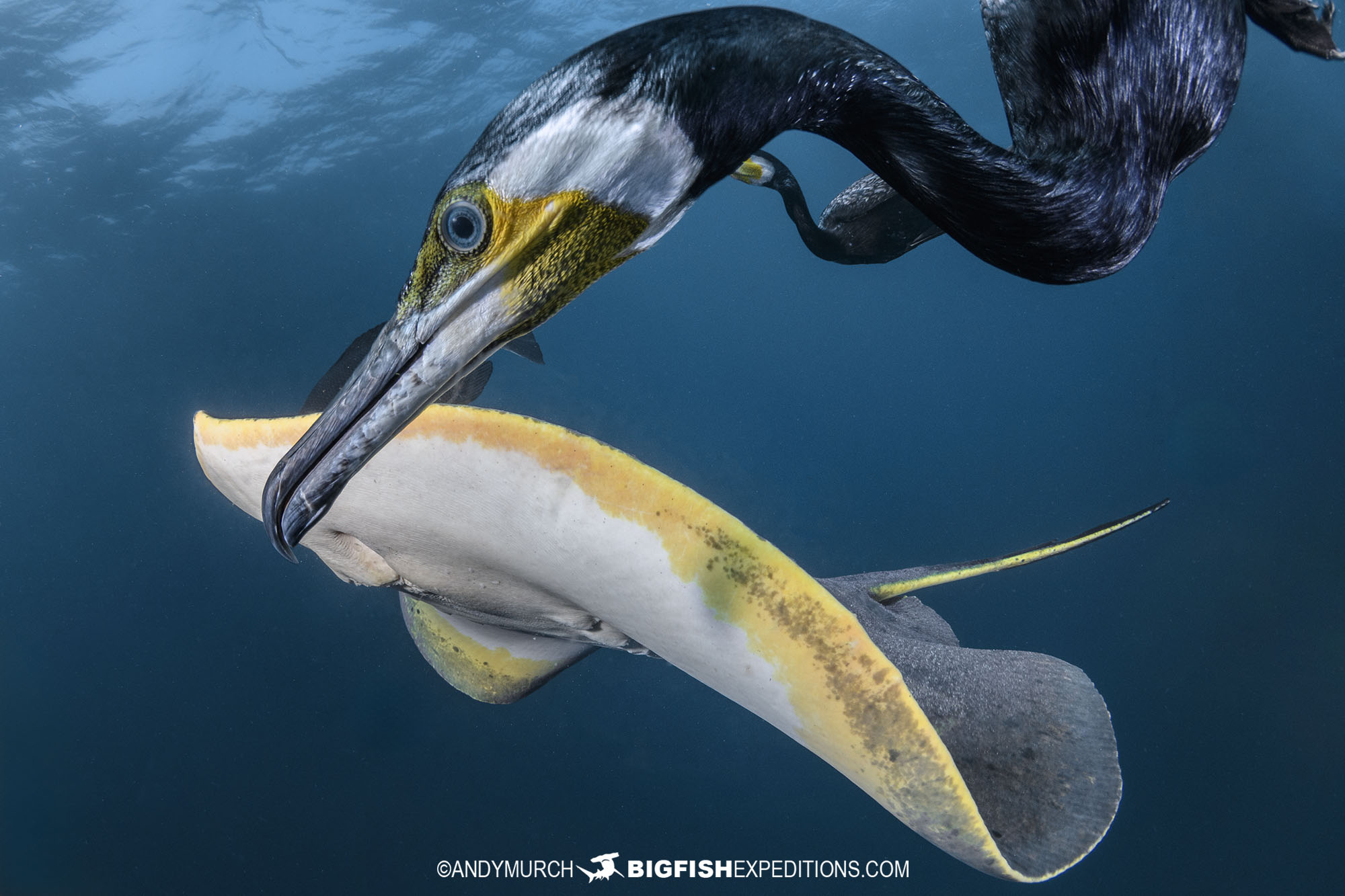
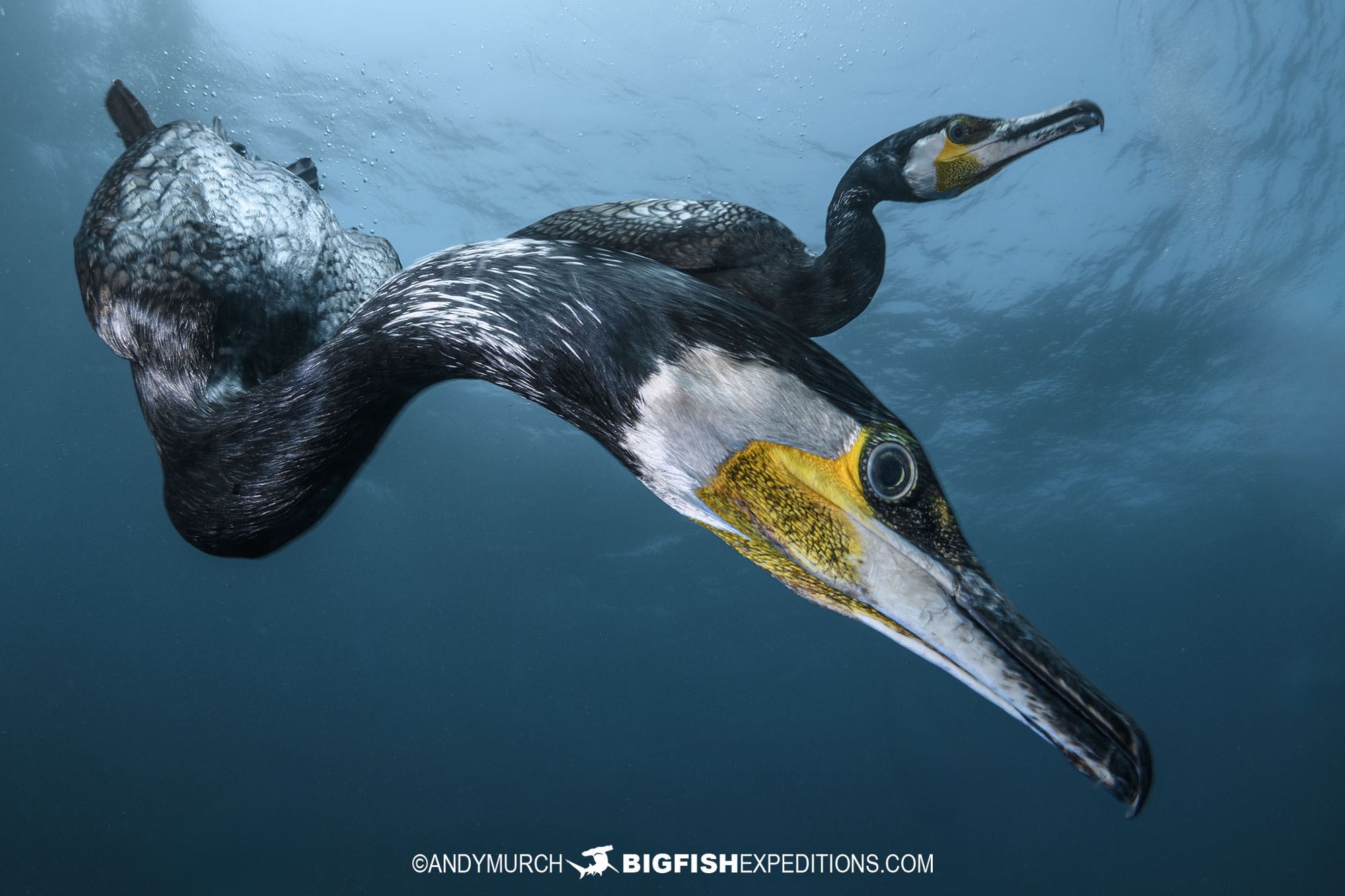
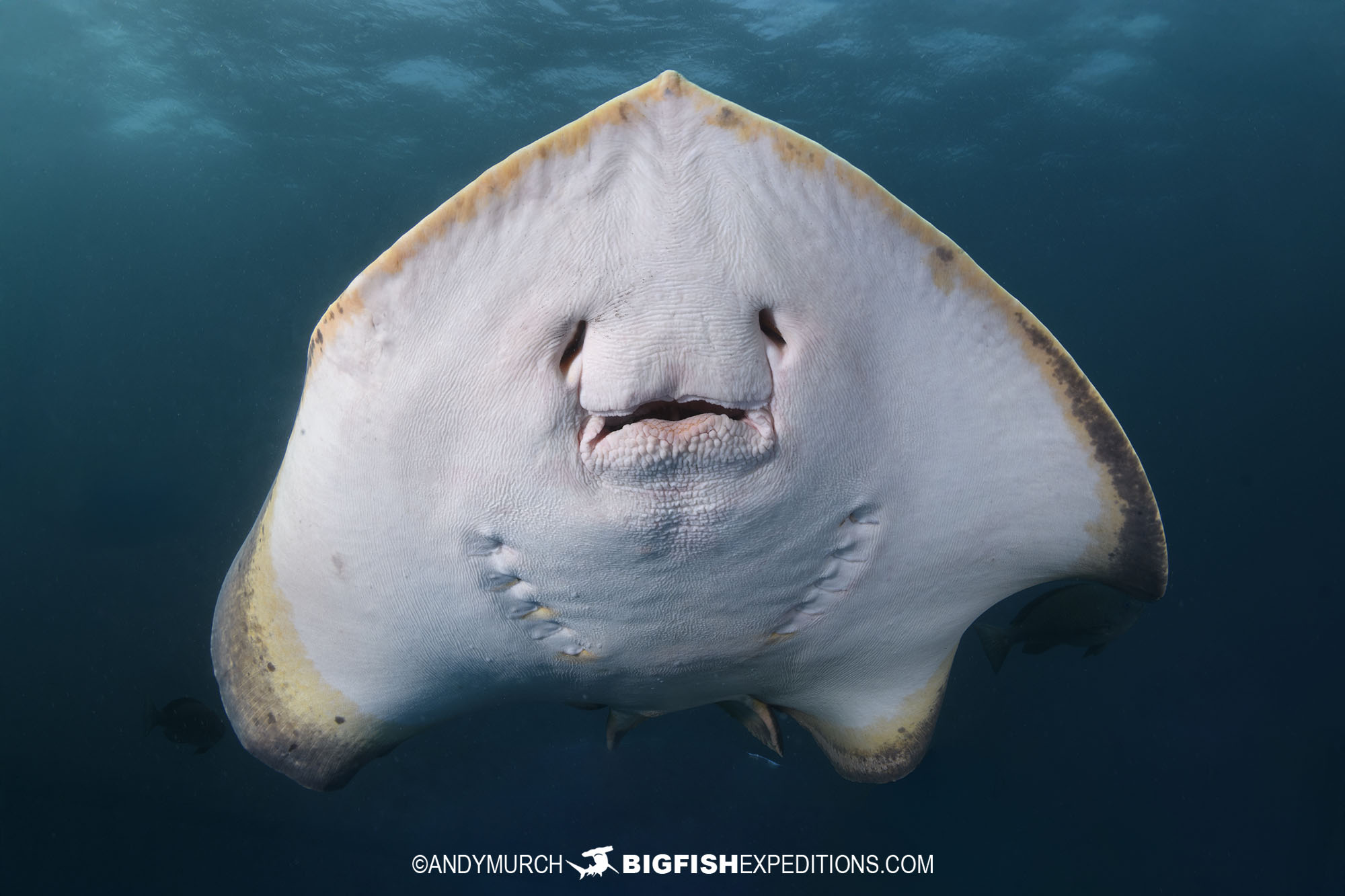
Japanese Angelsharks
There are two types of angelsharks in Japan. One is incredibly rare, but the other is relatively easy to see if you know where and when to look. The best season for angelsharks (and a few other species) is late winter, when the water temperature is in the mid-teens celsius. When the ocean begins to warm up in the spring, angelsharks retreat into deeper water, so we generally organize our trips for when we’re most likely to run into angelsharks.
Japanese Angelsharks are ambush predators that lay in wait under the sand with just their eyes and spiracles exposed, waiting for a hapless fish to swim within their striking distance. When a suitable meal swims within reach, they explode from the substrate, mouth agape, and lock onto the unlucky fish with needle sharp teeth.
We saw three angelsharks on the Boso Peninsula. After a little fanning, they were exposed enough for some nice images. Then, after a couple of beats of their fins, they completely disappeared under the sand again.
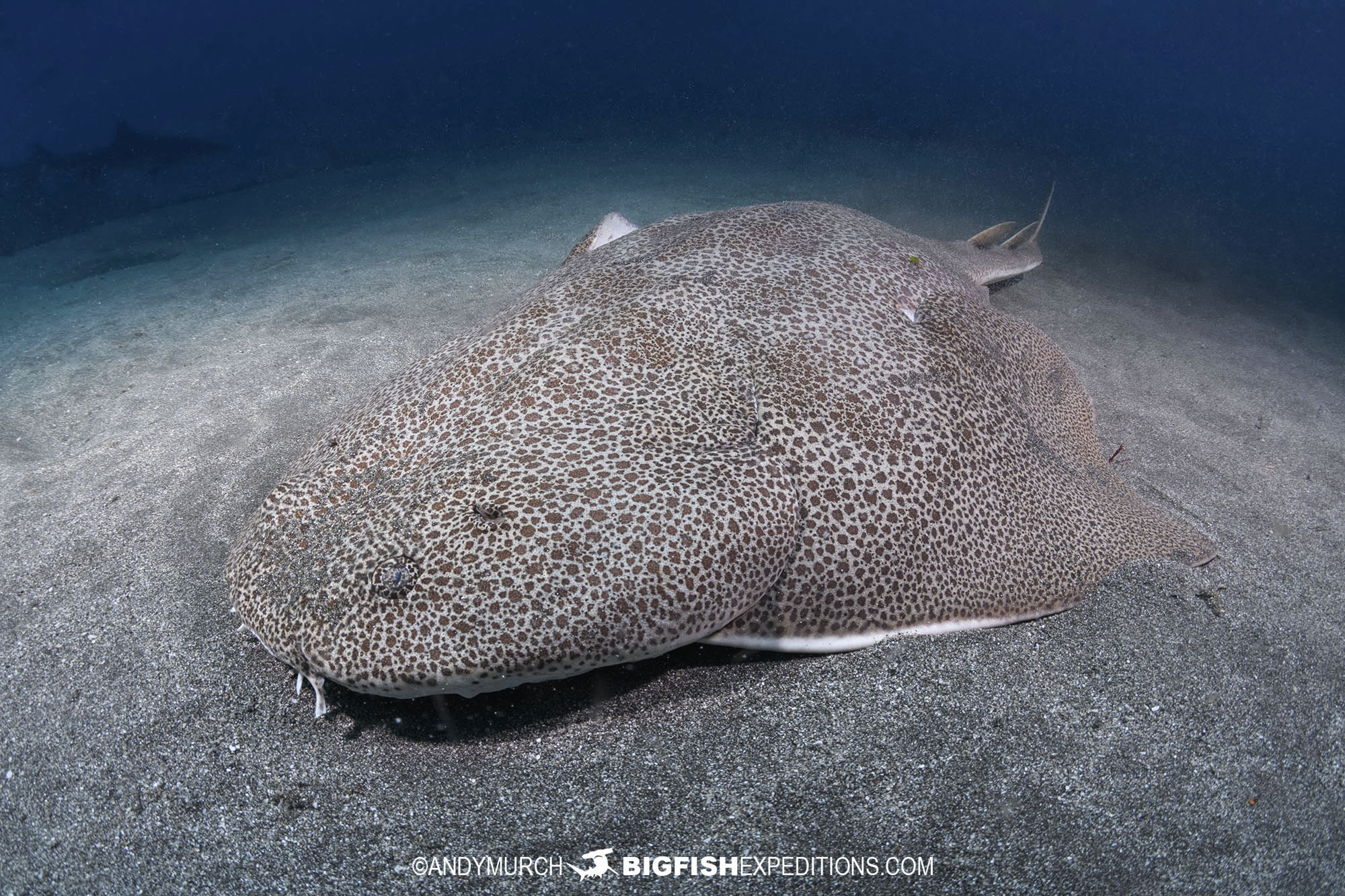
Bottlenose Guitarfish
Not far from the banded houndshark dive site, there is a wide sandy plain that is a great place to find Bottlenose Guitarfish. After maybe 10 minutes of searching, we found two guitarfish, one of which sat patiently while I snapped a few shots.
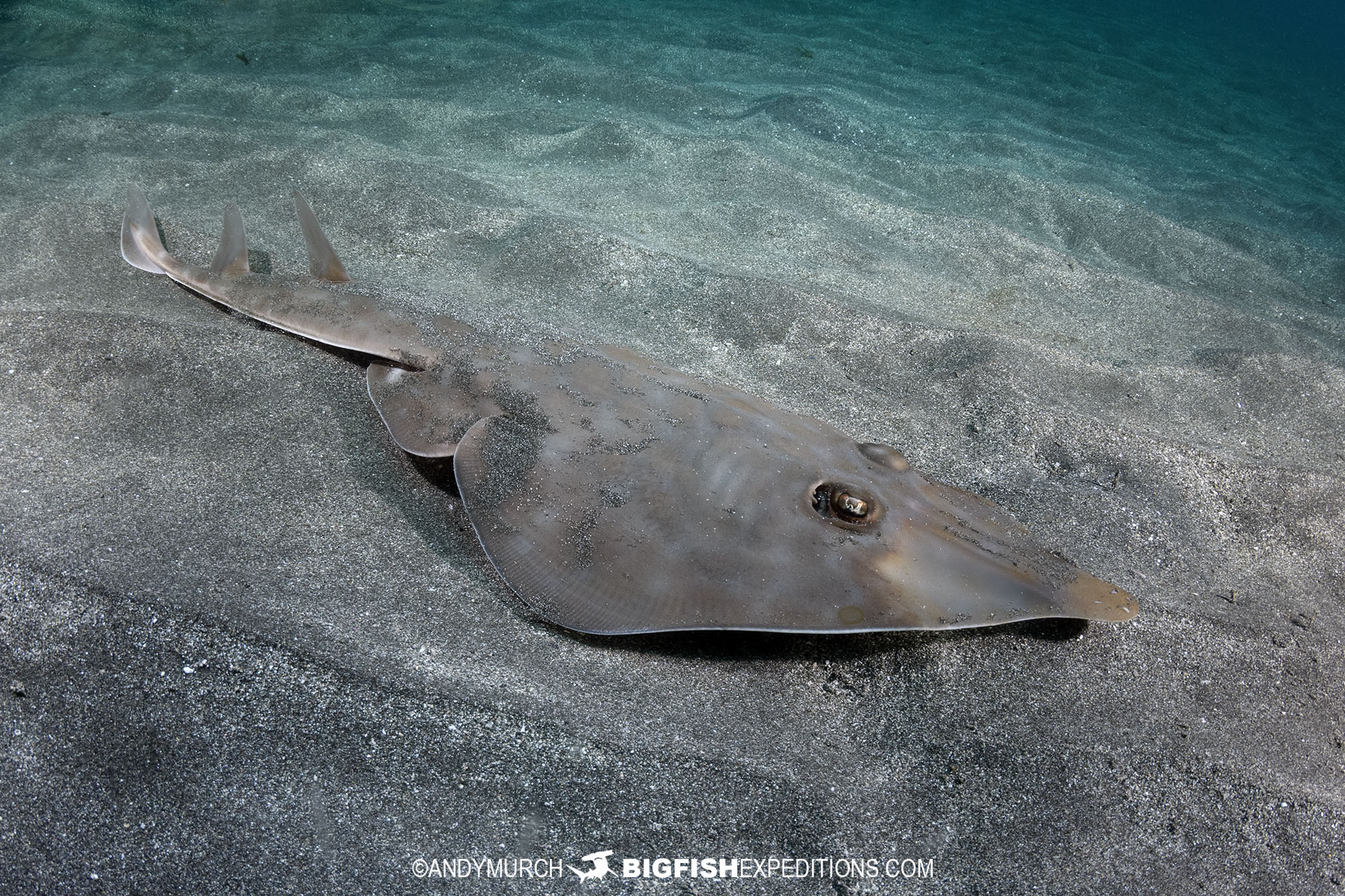
Blotchy Swell Sharks
The fishing port where we launched the boat each morning, keep their live catch in large tanks. Sometimes they inadvertently pull up blotchy swell sharks and other deep sea sharks in their nets. Rather than sell them at the market, they let our dive guide release them on the dive. Although this isnot a natural encounter, the avid shark photographers on our trip were thrilled to have a chance to get some shots of two blotchy swell sharks that were waiting for us one morning.
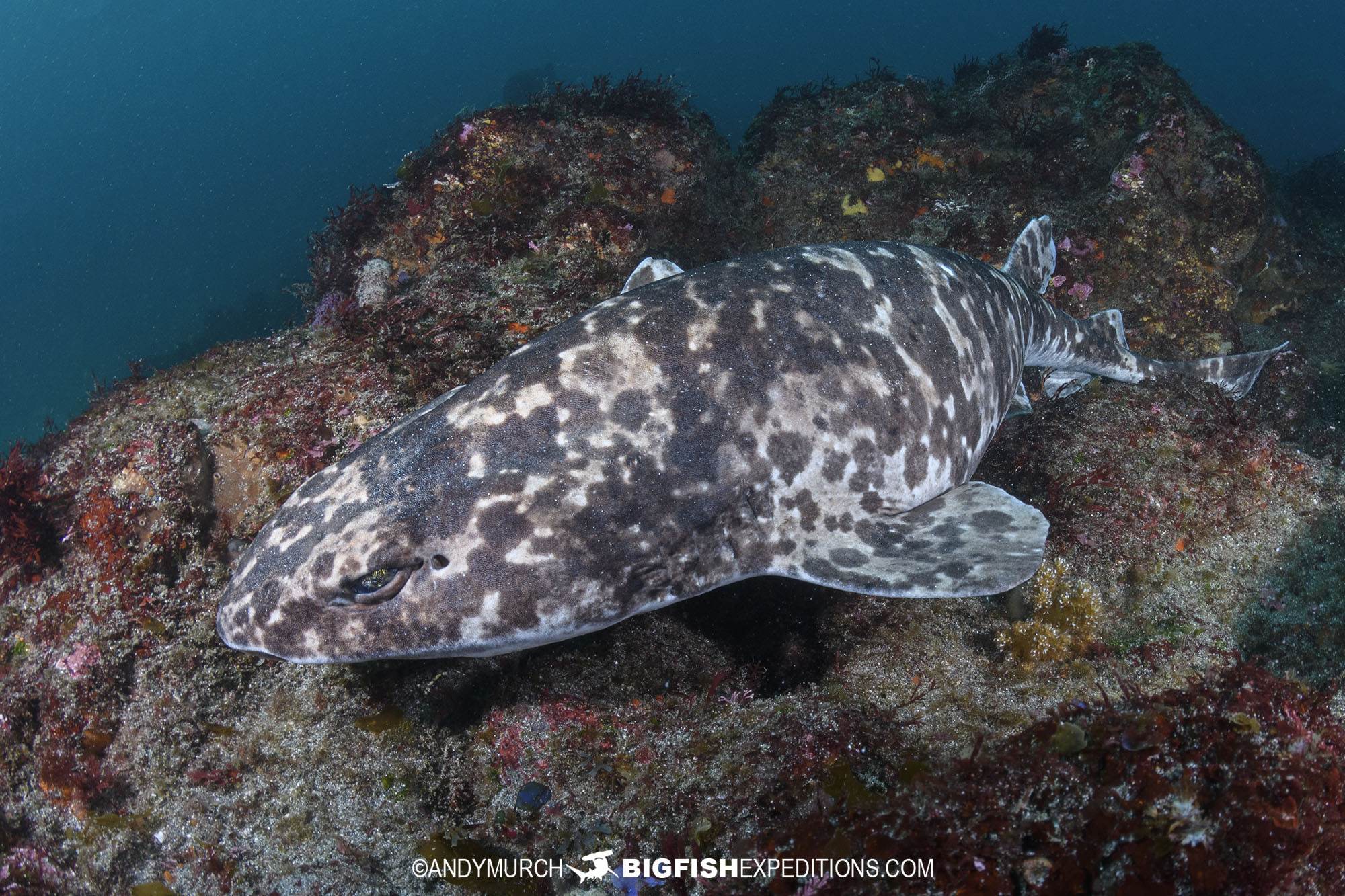
Oriental Stingaree
The last new elasmobranch species we saw before we left the Boso Peninsula was a tiny Oriental Stingaree swimming across a sandy bay. There are currently 28 species of stingarees, but this is the only one that lives in the North Pacific. The rest all live around Australia or in southern Southeast Asia.
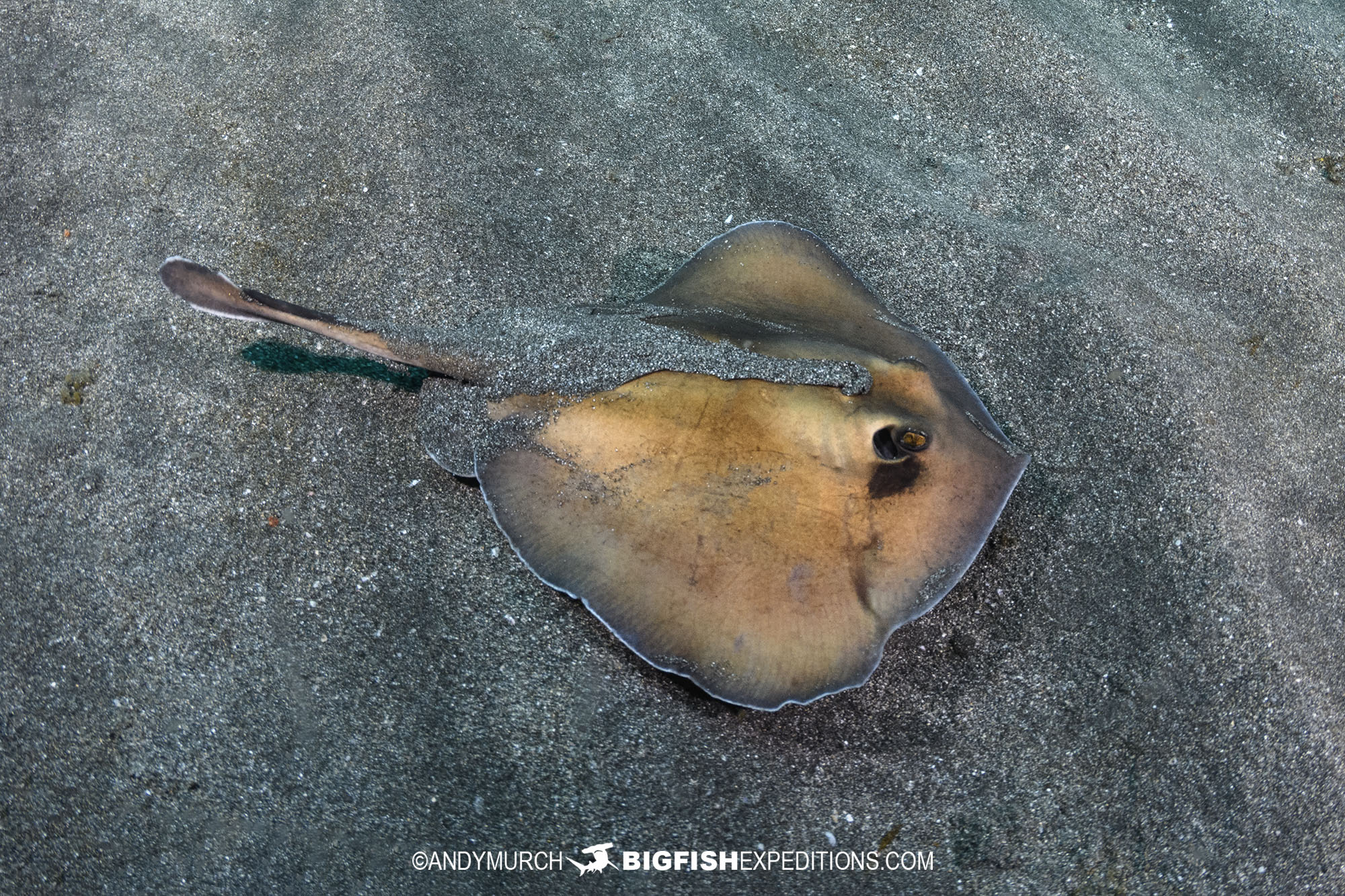
Monkfish Encounter
Midweek, the wind picked up so we skipped our final day of diving on the Boso Peninsula, drove around Tokyo Bay, and went shore diving at Osezaki; a well-protected bay on the northwest coast of the Izu Peninsula. We did not see any sharks or rays, but we came across a huge monkfish; a species that none of our guests had seen before. Osezaki is also a good spot for large frogfishes, Japanese morays, and lots of other photogenic reef life.
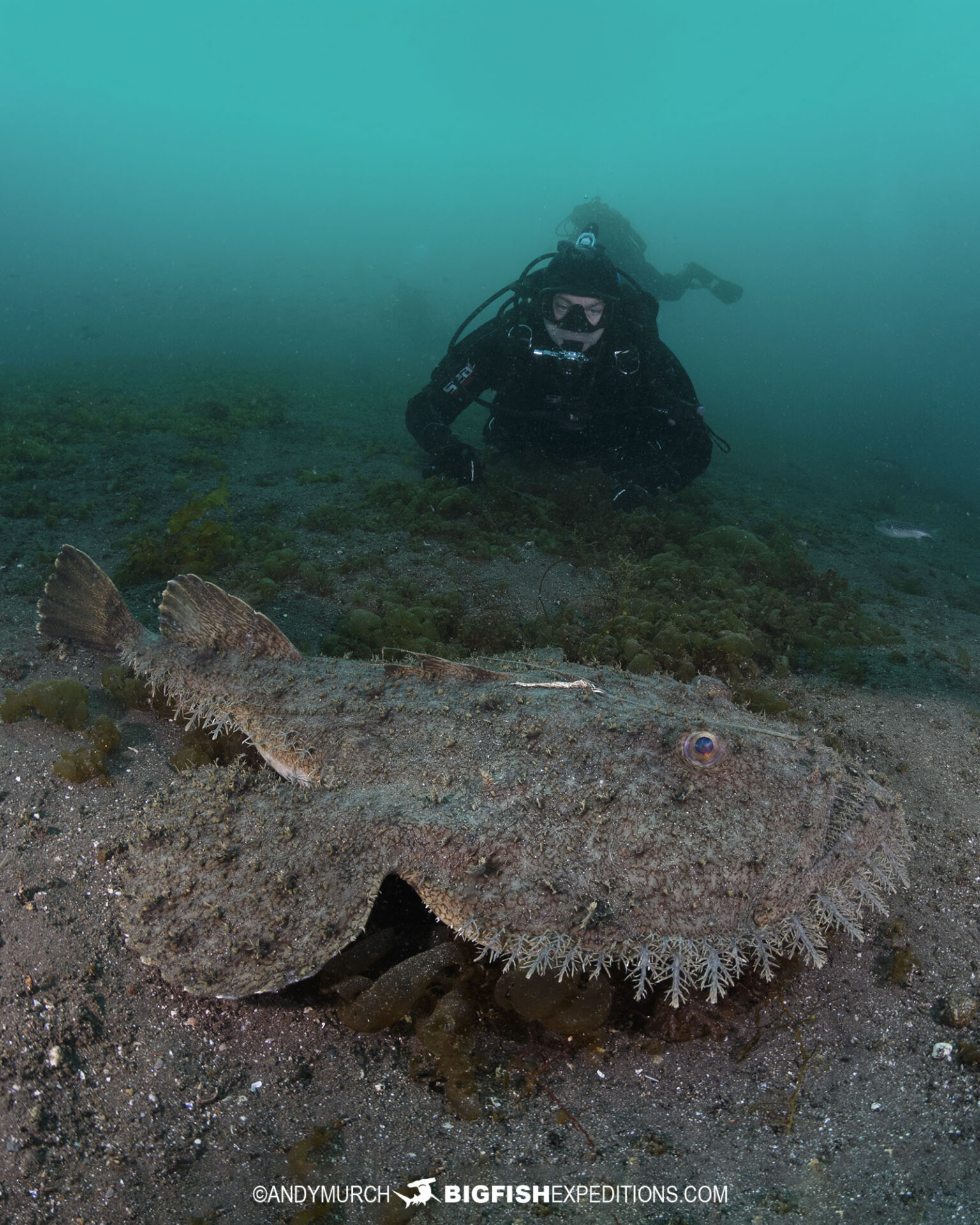
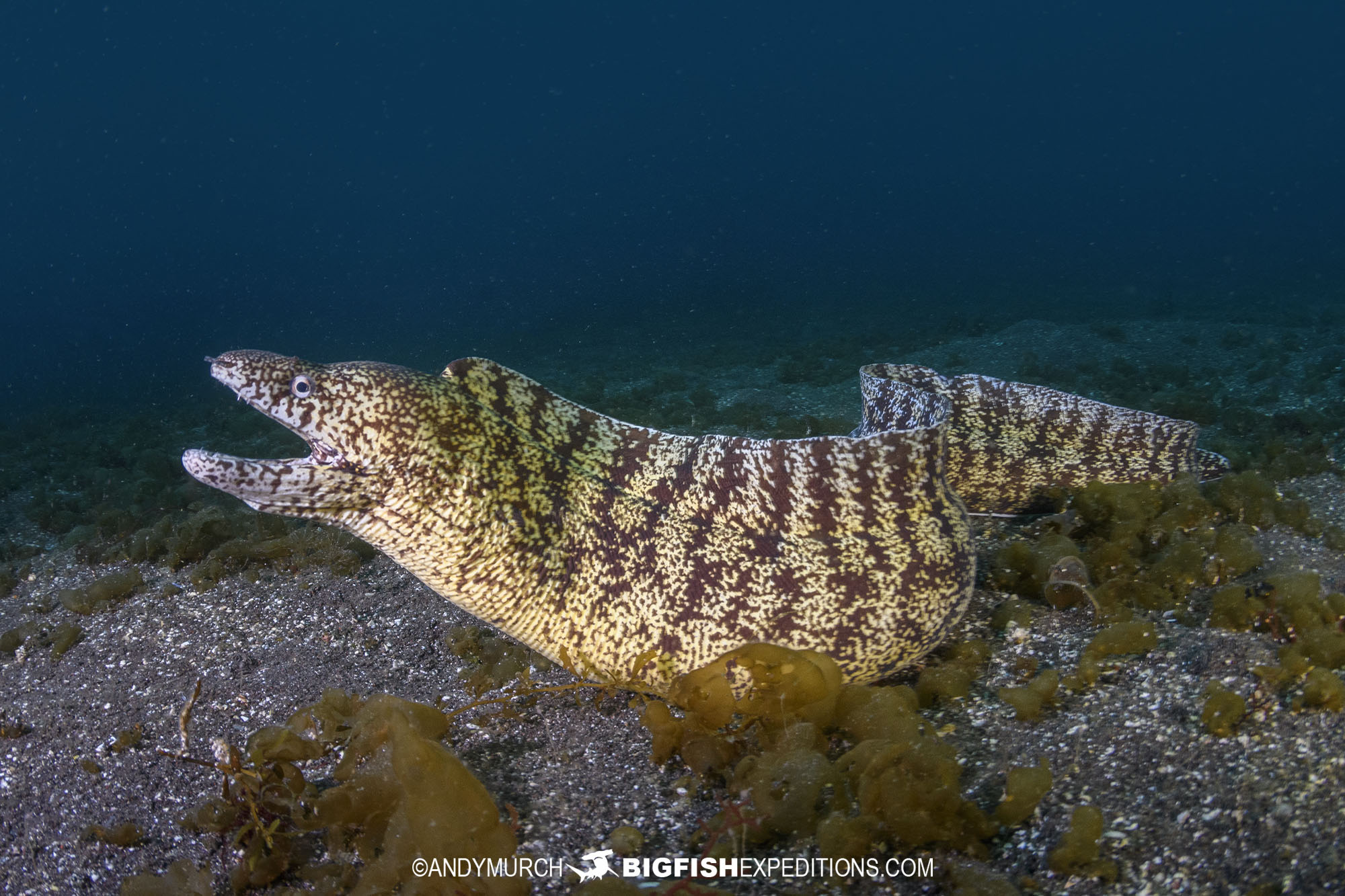
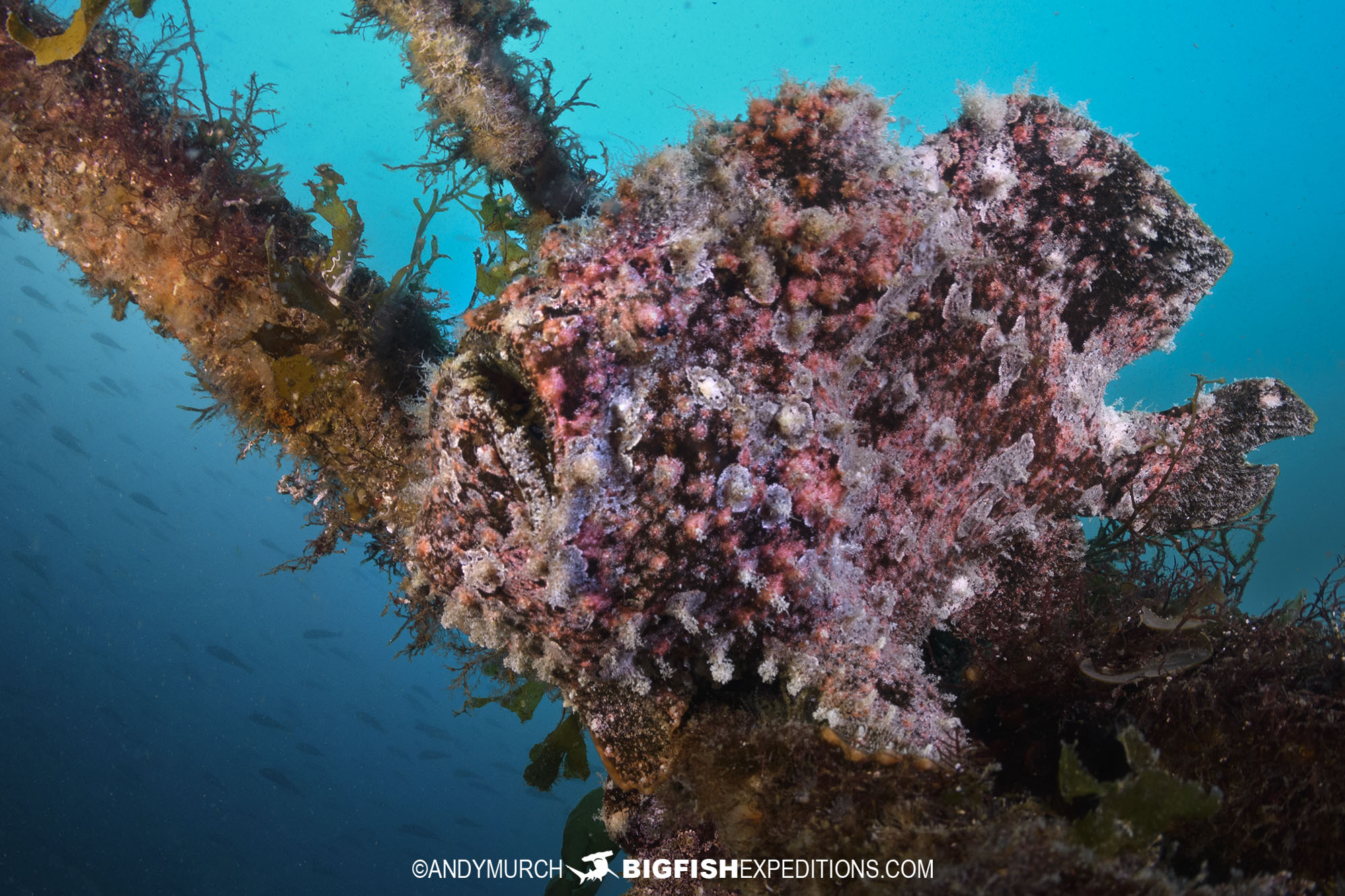
Japanese Wobbegongs.
The next day we headed to Mikomoto Island; home to schooling scalloped hammerheads and the best place in Japan to see Japanese Wobbegong Sharks.
Japanese Wobbegongs are found (in deepwater) all the way from southern Japan to Vietnam. They are the only wobbegong species in the northern hemisphere, but there is some speculation that they may represent a species complex comprised of multiple closely related species.
While diving at Mikomoto, we saw three different wobbegongs. One of which was nicely positioned for photographs.
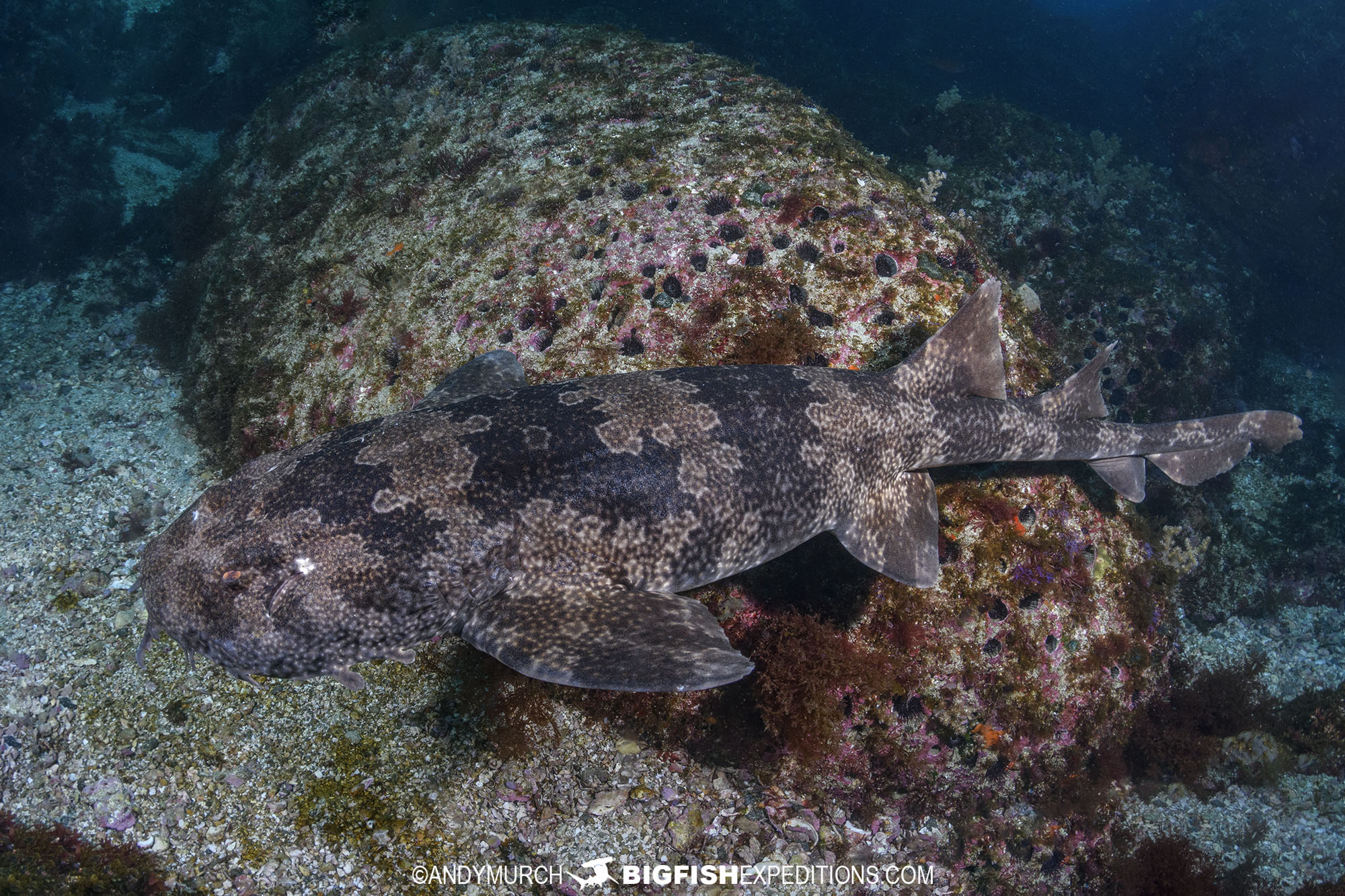
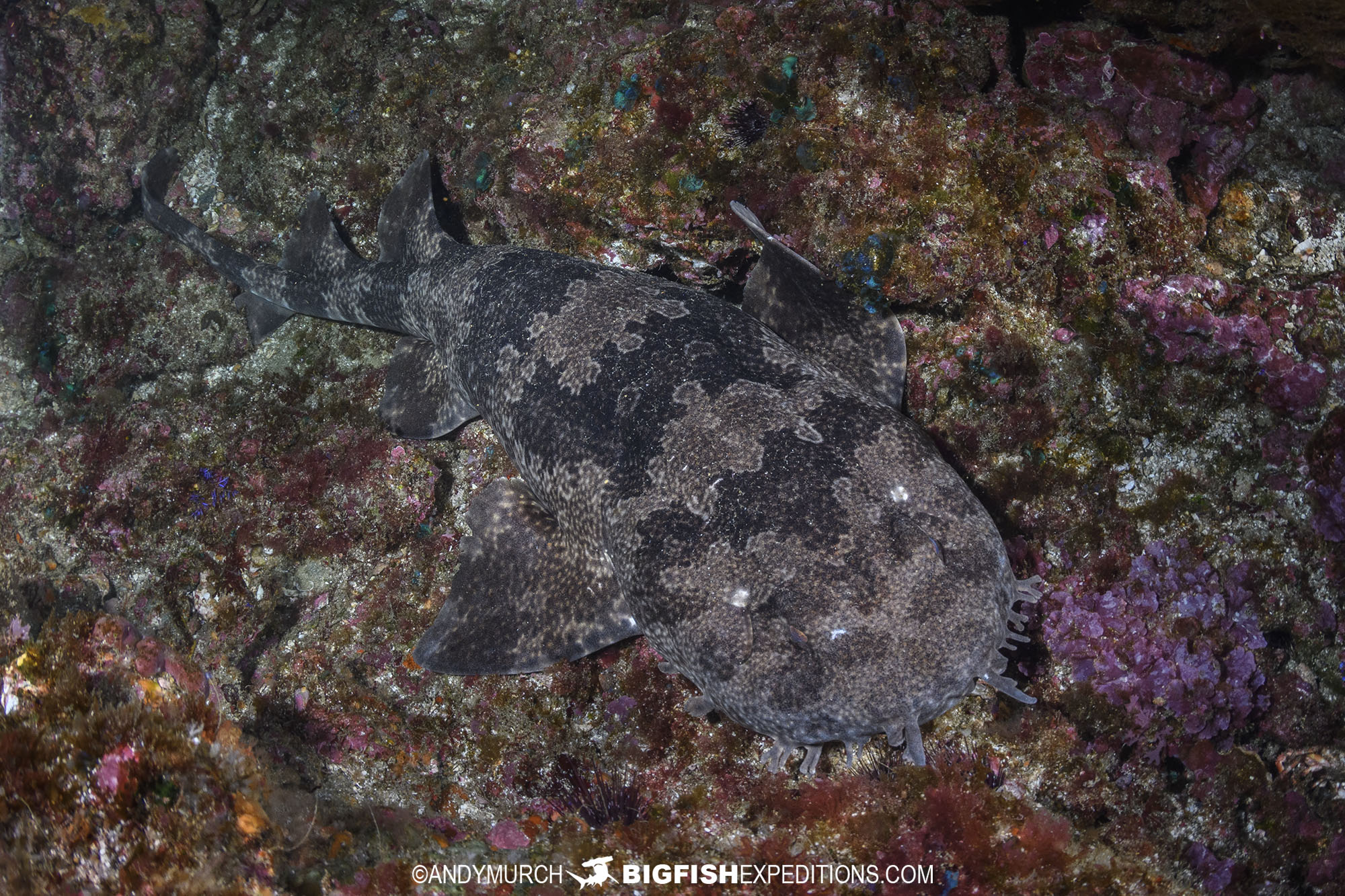
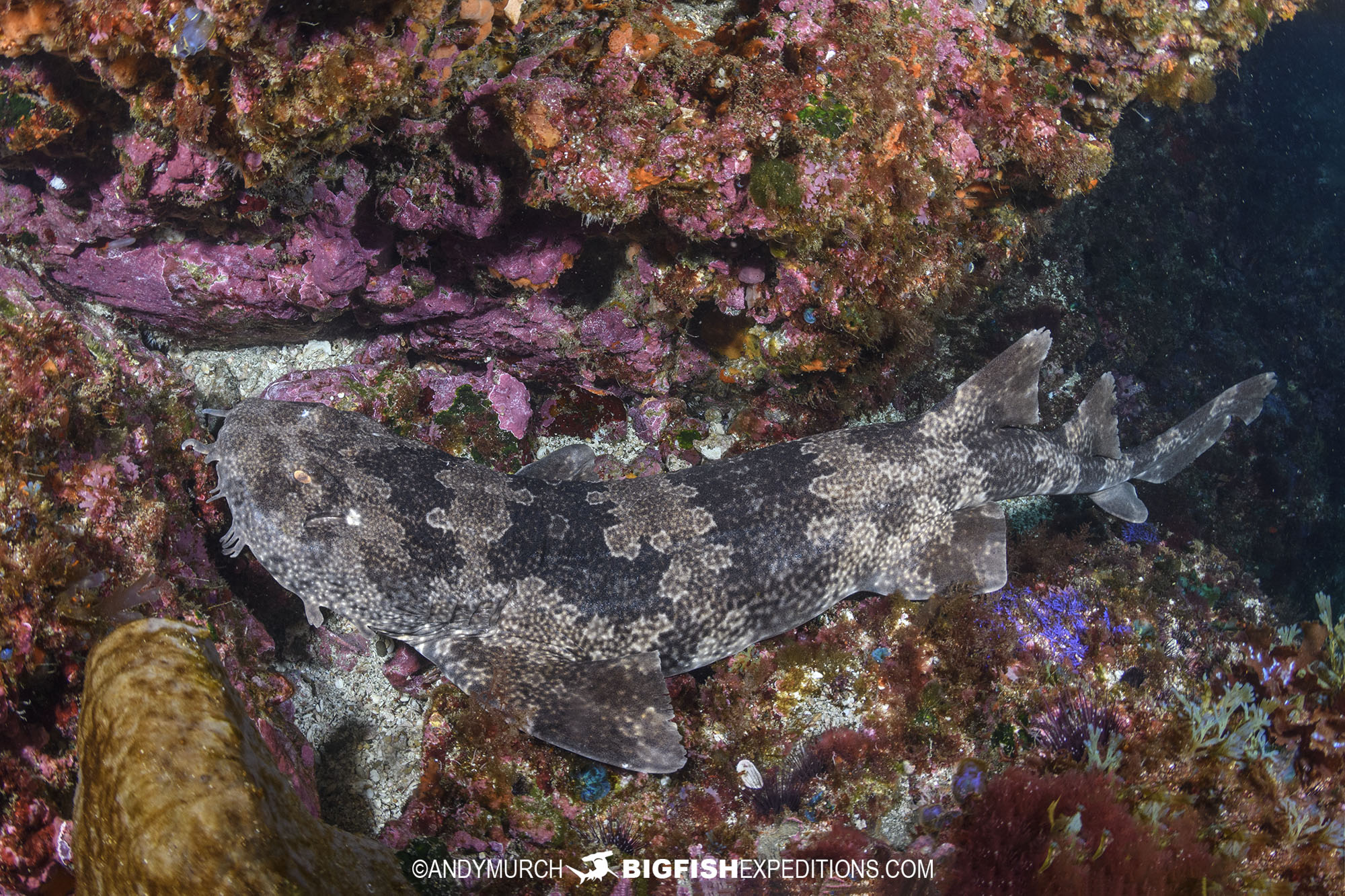
Hammerheads and Horn Sharks
We did see some schooling hammerheads at Mikomoto Island, but I was too focused on the endemic shark species to snap a picture. We also saw a few whitetip reef sharks and a Japanese Horn Shark that had a nasty wound. Its unclear if it was from a run in with another shark or a fisherman, but sharks are extremely resilient so it will probably heal quite quickly.
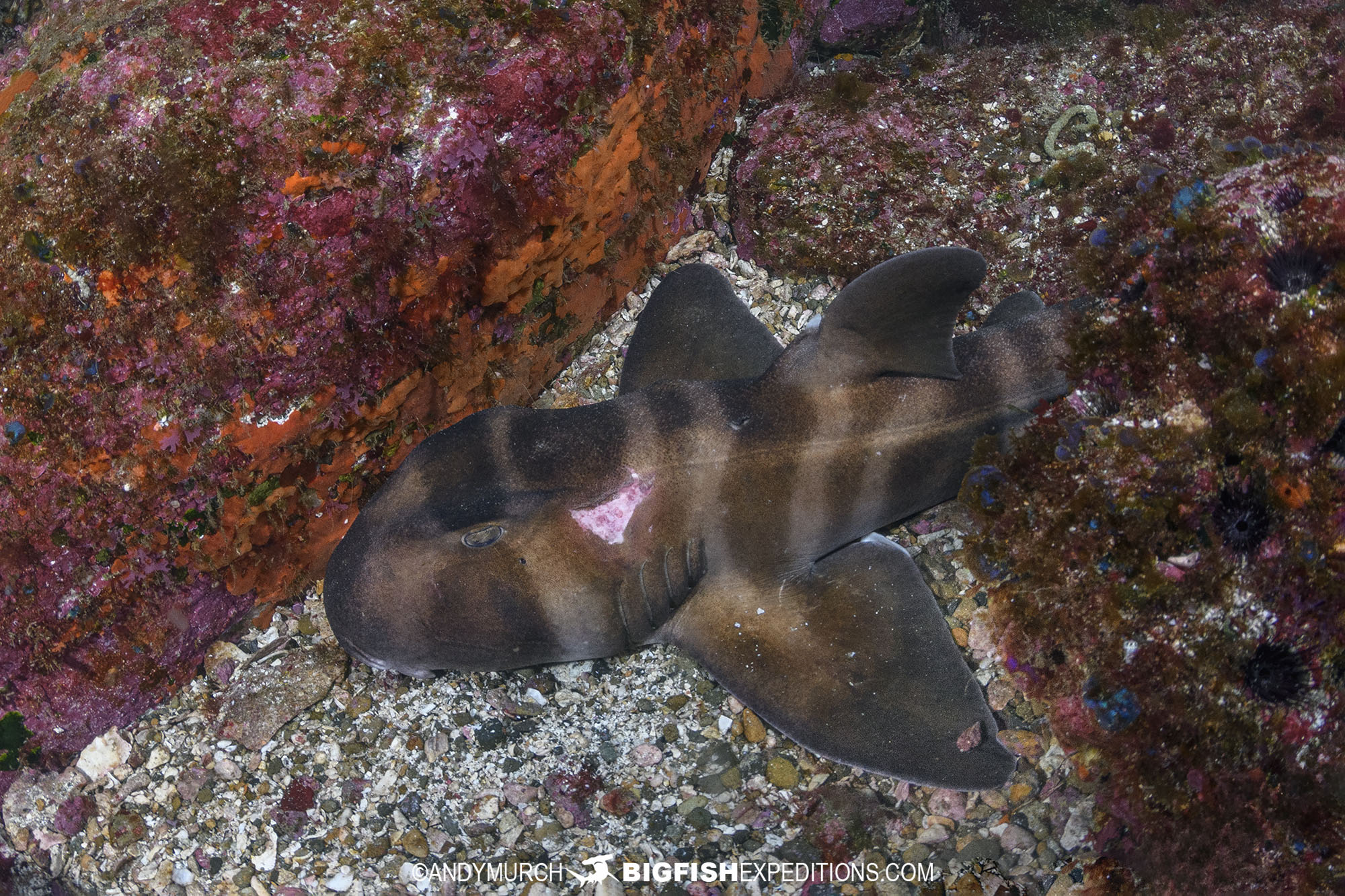
Windy Finish and our next Japanese Shark Safari
Sadly the wind picked up on our last day, so it was impossible for us to dive. Rather than sit around at the hotel, we took everyone to a beach where snow monkeys often hang out, then we went to one of the largest reptile parks in Asia, and on the way back to Tokyo we visited an aquarium that exhibits deep water sharks. As always, we pack as much as we can into our trips!
Our next Japanese Shark Safari will be in the spring of 2027. Learn more!
